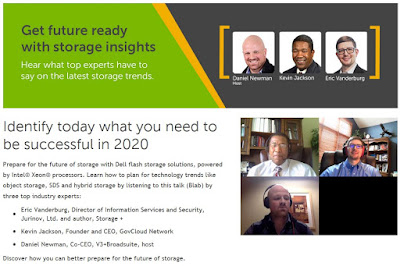The definition of DevOps emphasizes collaboration and communication between
software developers and other IT professionals while automating the
software delivery and infrastructure change process. While agile
software development and the use of automated infrastructure
configuration tools stand proudly in the DevOps spotlight, little has
been said about the actual infrastructure that modern tools such as
Puppet and Chef automate.
DevOps in Hybrid IT Environments
Much has been written about Chaos Monkey, a tool that ensures
individual software components work independently by randomly killing
instances and services within Netflix’s Amazon Web Service (AWS)
infrastructure. This process clearly stresses AWS infrastructure
operations as automation scripts reconfigure infrastructure components
on the fly. Without taking anything away from the operations excellence
this displays, how would an enterprise match this feat across a
hybrid IT environment? How would you support the DevOps philosophy across a hybrid IT infrastructure?
The DevOps philosophy embodies the practice of operations
and development engineers working together through the entire service
life cycle, from design to development to production support. It’s
linked closely with agile and lean approaches and abandons the siloed
view of the development team being solely focused on building and the
operations team being exclusively centered on running an application.
As enterprises adopt both private and public clouds, they
typically do not throw away their in-house infrastructure. Although
consolidation, outsourcing and IT efficiencies may reduce the number of
corporately owned data centers, a hybrid operational environment will
still remain. Extending the DevOps philosophy into such an environment
requires active management of all an organization’s IT infrastructure,
regardless of its source. This active IT management is different from
the budget-and-forget management seen in the past and requires the
following:
- Active monitoring and metering of all IT services;
- Continuous benchmarking and comparisons of similar services; and
- Viable options for change among pre-vetted and approved IT infrastructure service options (IT supply chain management).
These management functions are delivered by IT service broker
enablement, which refers to the integration of platforms that aggregate,
customize and/or integrate IT service offerings through a single
platform. In transforming the traditional, mostly static infrastructure
model into a multisourced IT service supply chain operation, these
platforms also deliver financial management and hybrid IT solution
design support. They uniquely enable the infrastructure dynamism needed
to pursue DevOps across a hybrid IT environment.
A DevOps Mindset in the Dynamic World of Cloud
According to
Gravitant,
hybrid IT is also more than just a catalog of public and private IT
infrastructure resources. It is a strategic approach that unifies the
hardware and software operational components of an end-to-end solution.
With this approach, an organization standardizes the delivery of
multisourced solutions by doing the following:
- Leveraging existing tools and resources without disruption;
- Offering additional, automated choices for users who need speed and agility; and
- Addressing architecture holistically, with the optimal balance of
technology investments — on-premises, off-premises, hosted, private or
public.
This concept requires a shift in structure and mindset because the
dynamic world of the cloud requires a new organizational structure. The
shift in structure helps organizations move from a

